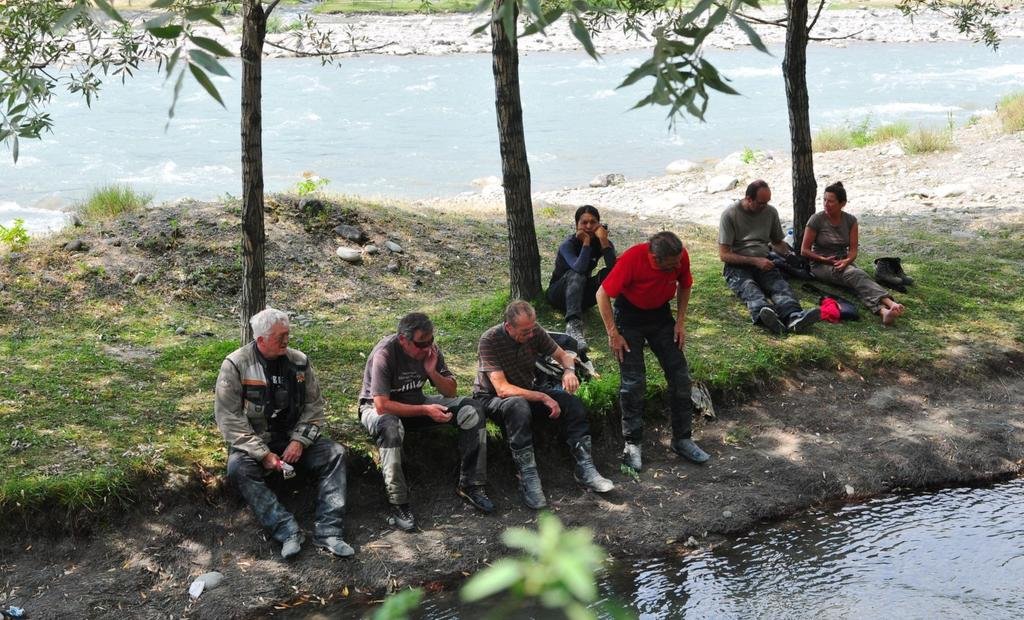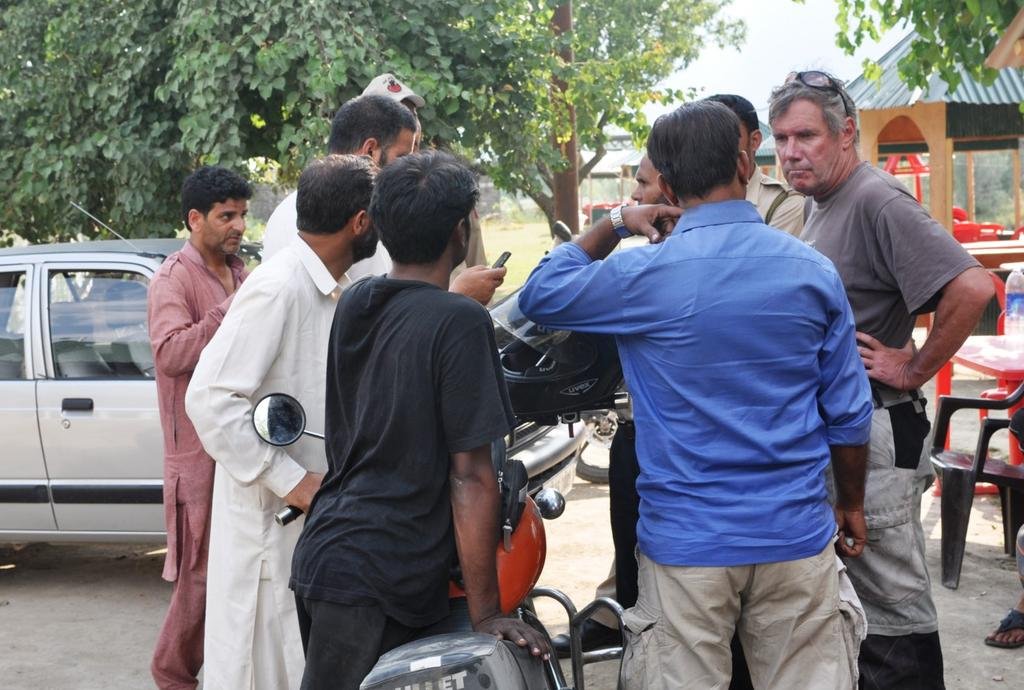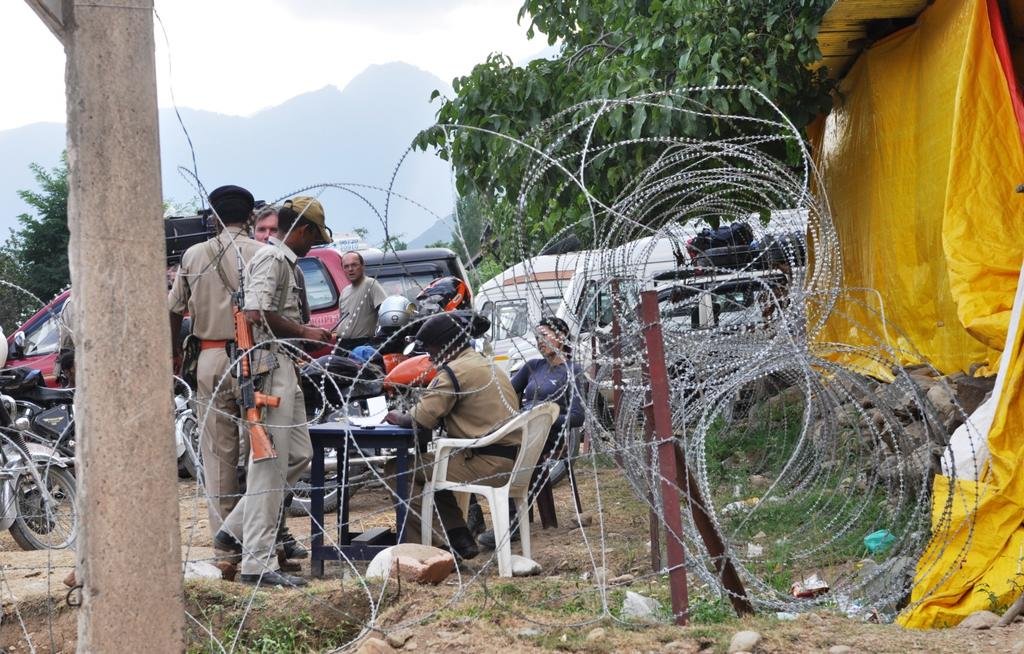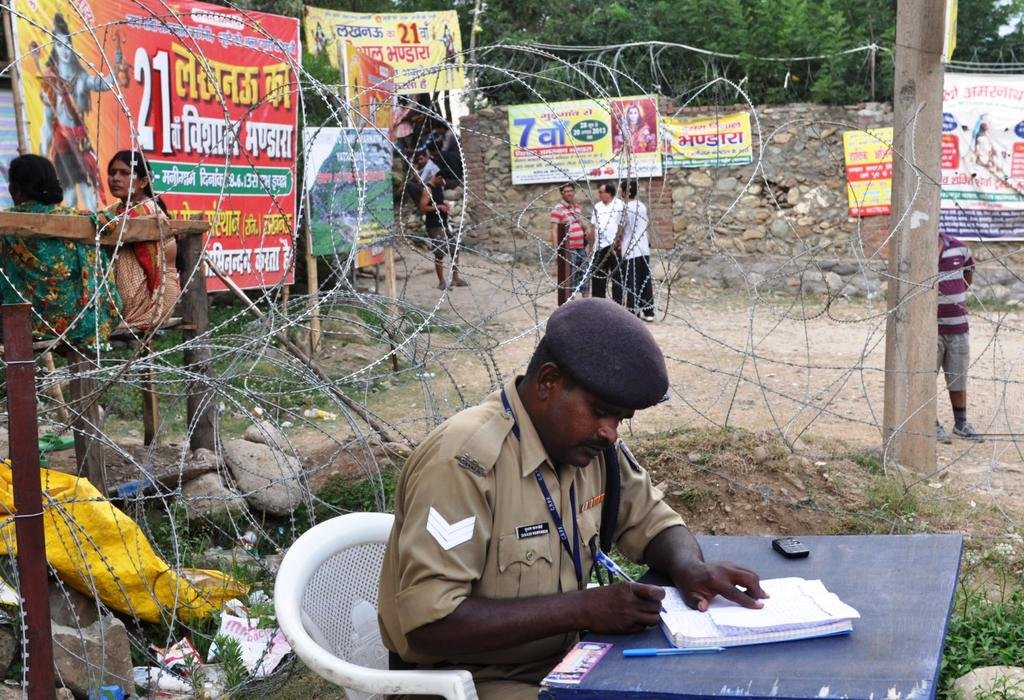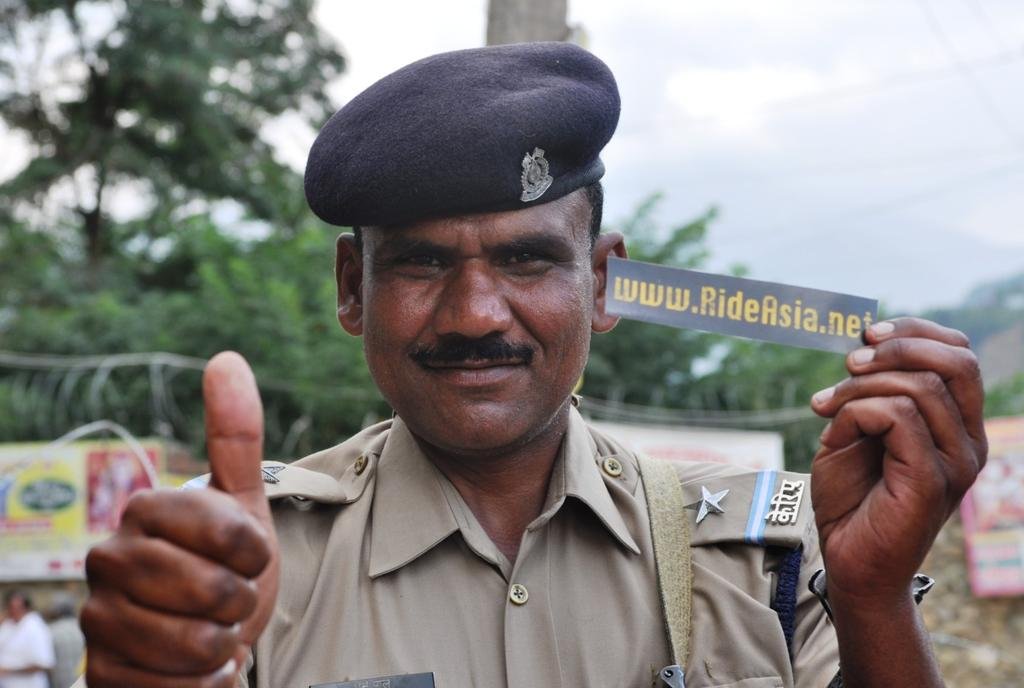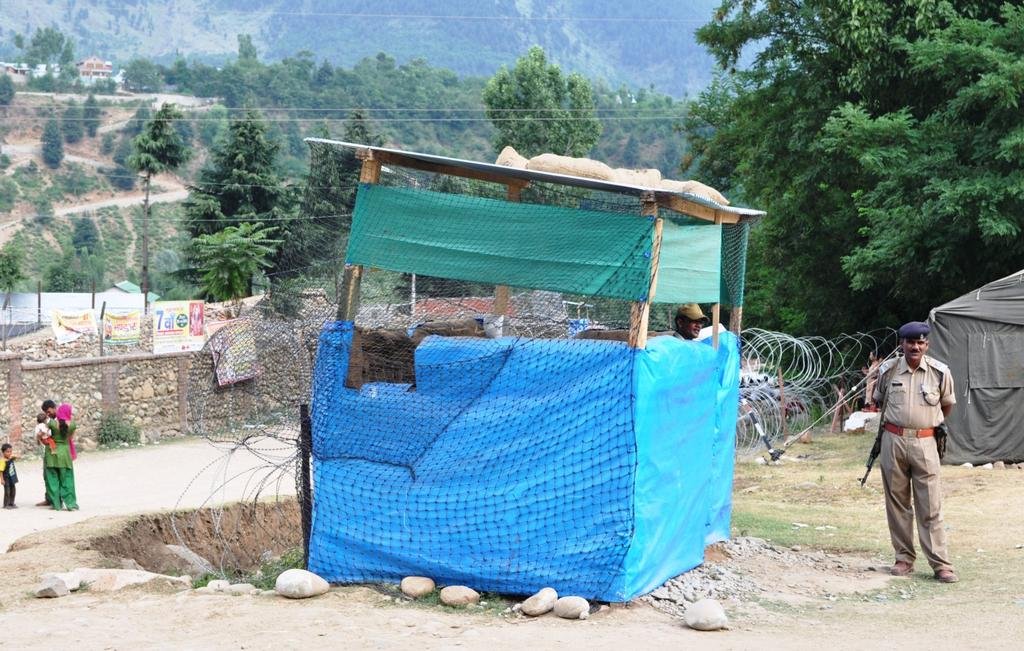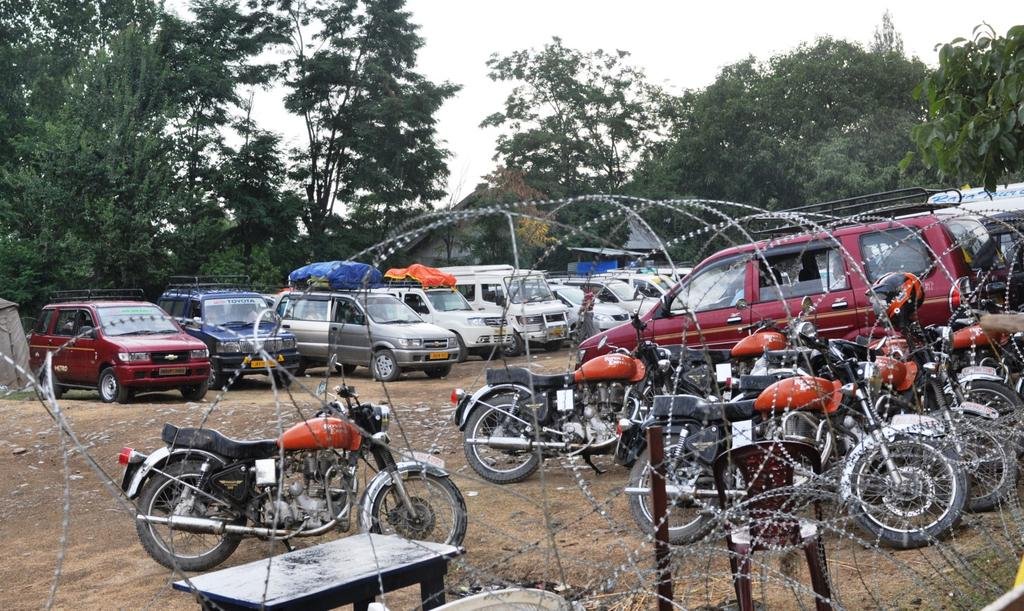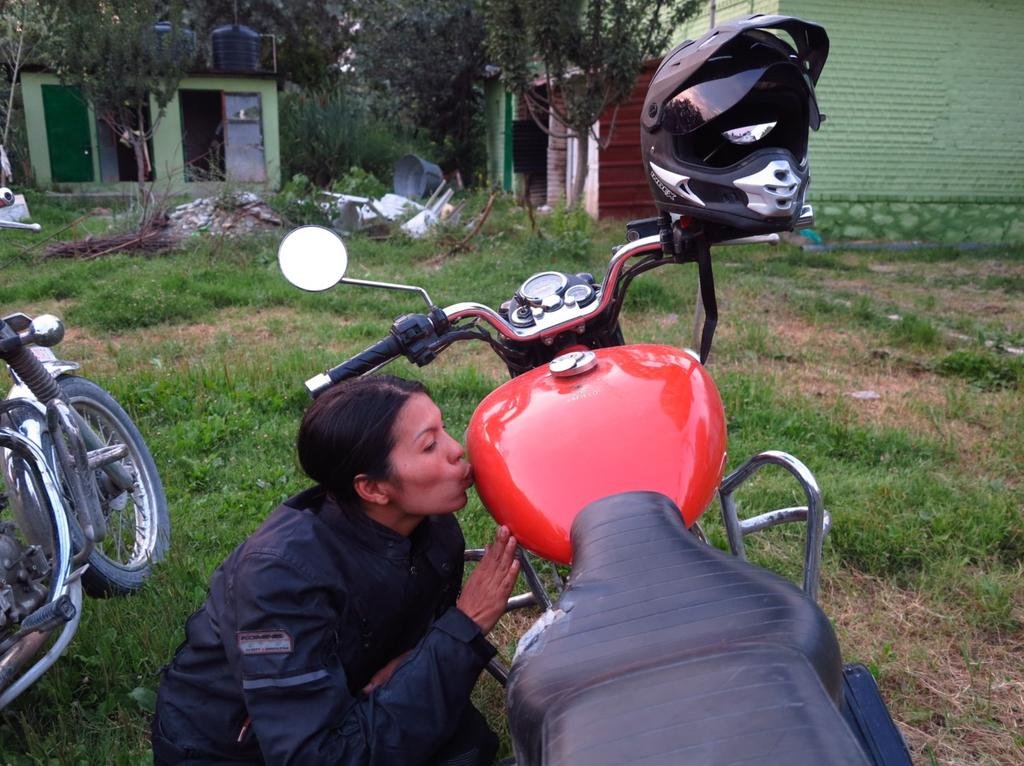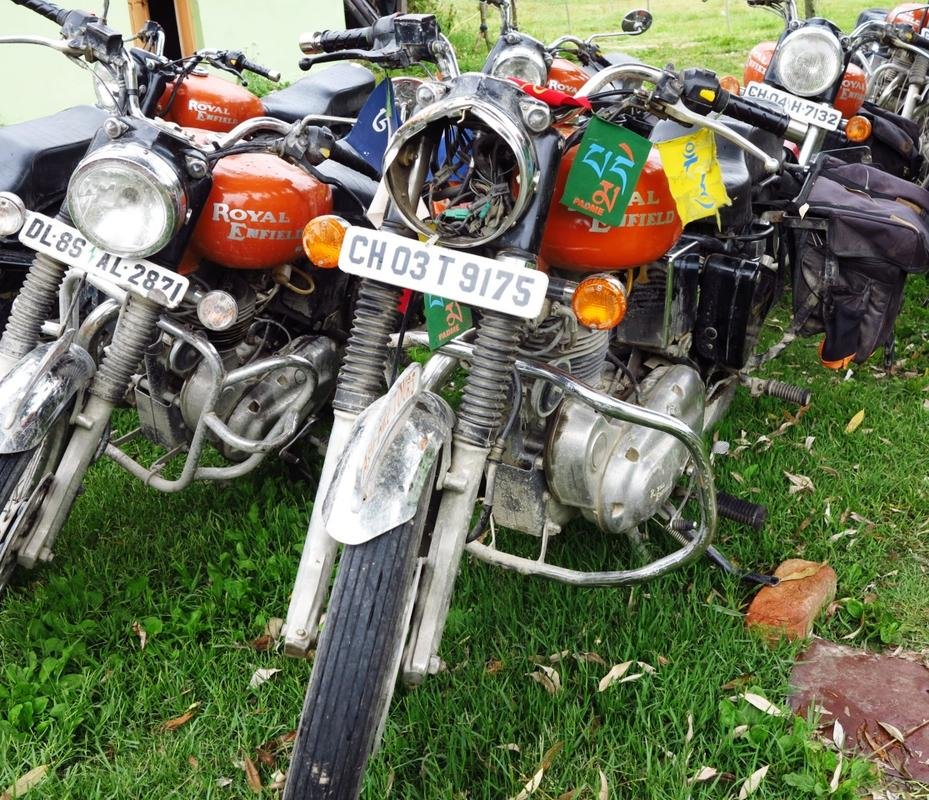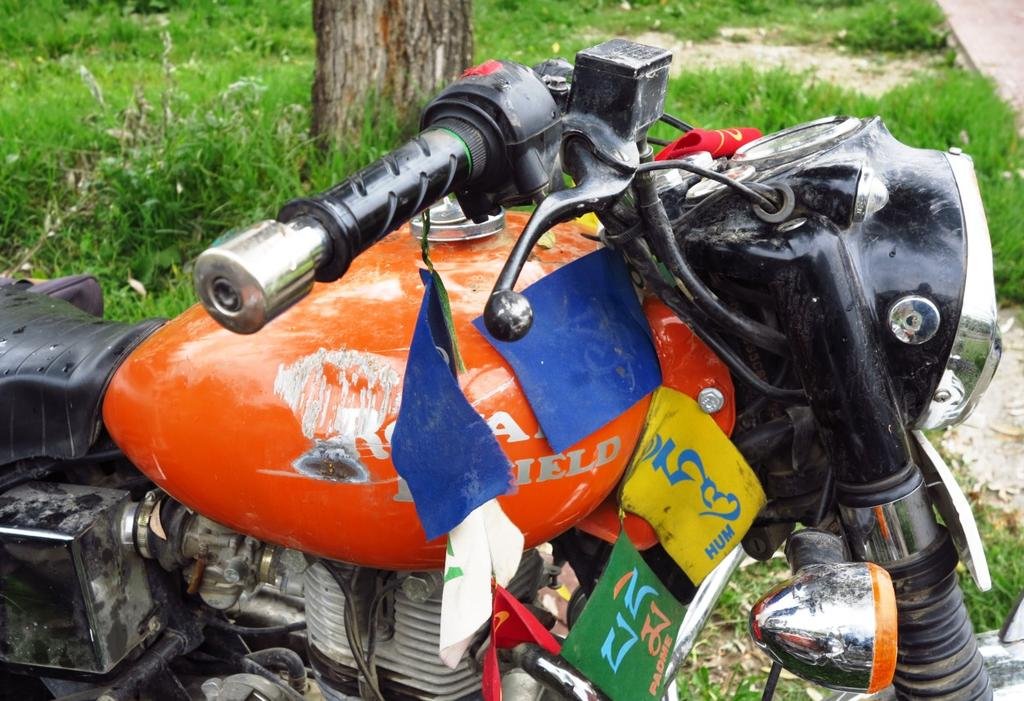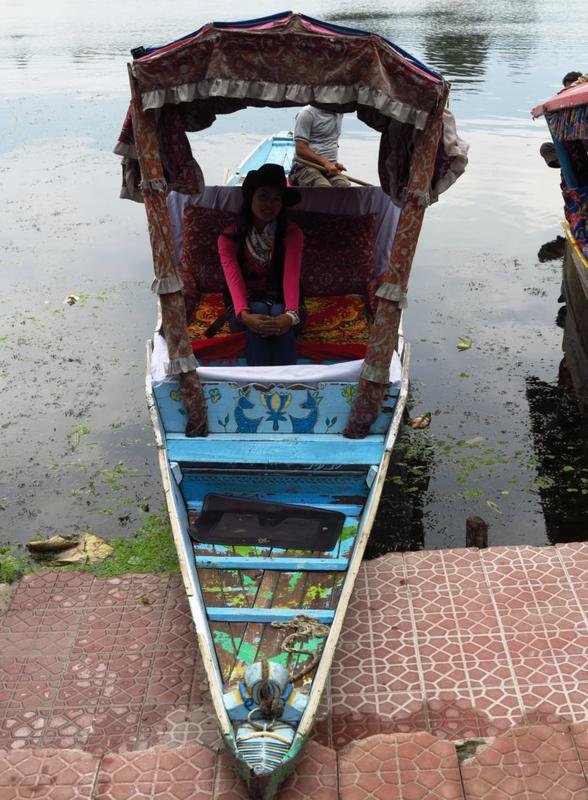You are using an out of date browser. It may not display this or other websites correctly.
You should upgrade or use an alternative browser.
You should upgrade or use an alternative browser.
A tour around north India on Royal Enfields
- Thread starter KTMphil
- Start date
KTMphil
Senior member
KTMphil
Senior member
Eventually, we were told that the road ahead had been cleared and it was safe to proceed, we had to check in with the Army at each village ahead.
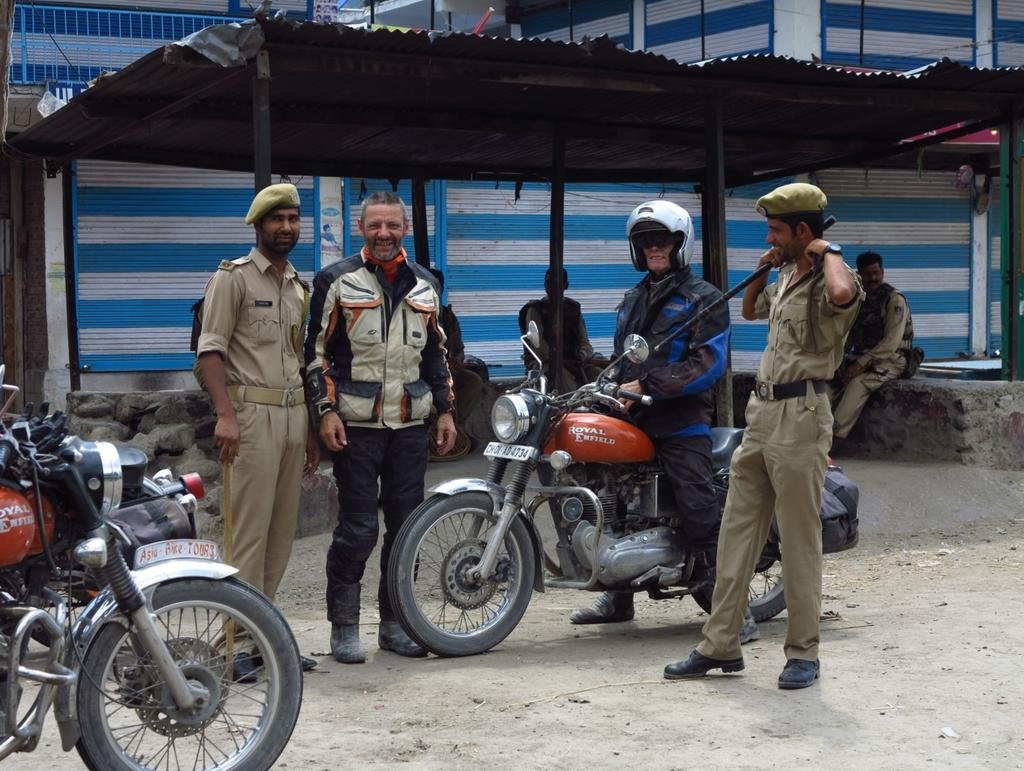
We pulled into the village below and there was frantic arm waving by the Indian soldiers, obviously there were problems ahead, locals were still throwing bricks and stones right here
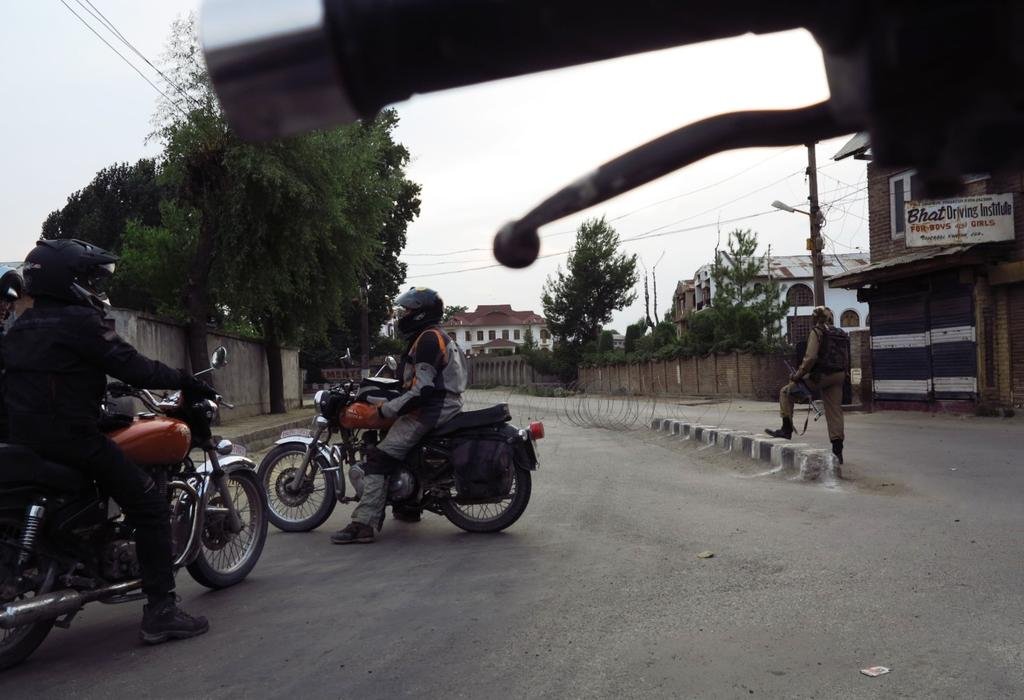

We pulled into the village below and there was frantic arm waving by the Indian soldiers, obviously there were problems ahead, locals were still throwing bricks and stones right here

KTMphil
Senior member
...... more to come
- Joined
- Aug 15, 2012
- Bikes
- KTM 613 EXC, BMW R90S & Dakar, MZ250, Norton 16H, Honda - 500 Fs & Xs, DRZs, XLs XRs CRFs CT110s etc
You are a braver man than me Phil,,them curries would kill me,,,heartburn
great report ,,happy and safe riding
They'd literally kill me. I'd love to do this ride but I can't eat spicy foods any more due to an allergy.
Nice one on the camps... my father spent four years in one of those Austrian "holiday" camps.... and he wasn't much of a fan of barbed wire after that.
KTMphil
Senior member
They do have non spicy food too....I don't want to see an Indian curry for a very long time.
They'd literally kill me. I'd love to do this ride but I can't eat spicy foods any more due to an allergy.
Nice one on the camps... my father spent four years in one of those Austrian "holiday" camps.... and he wasn't much of a fan of barbed wire after that.
KTMphil
Senior member
KTMphil
Senior member
Then for a real treat, a couple of nights on the Srinagar house boats, a taste of old style opulence - The Venice of the east.
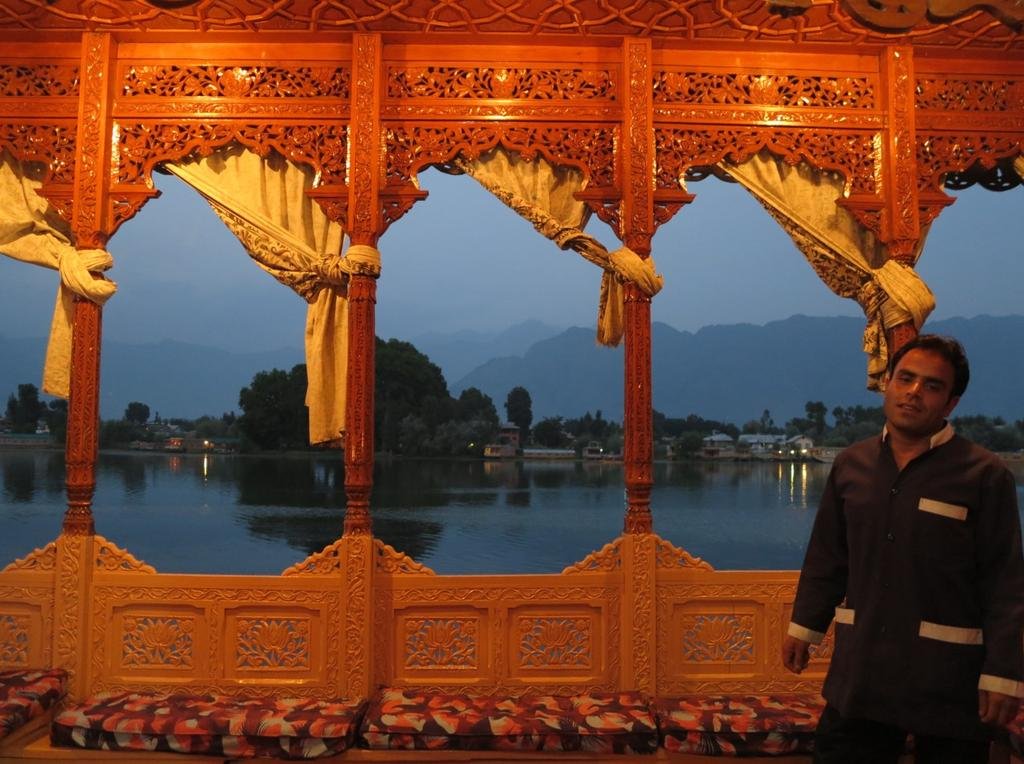
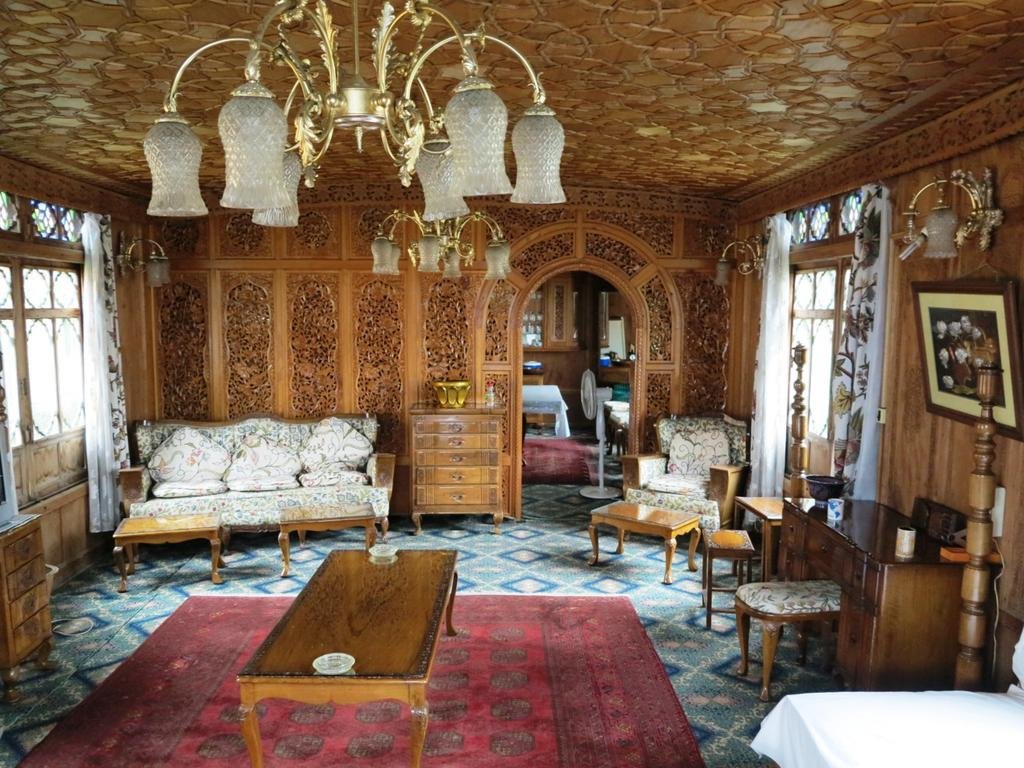
From:
Houseboats
In the19th century the boat-dwelling community in Srinagar startet building luxury versions of their own homes to cater to visitors. The houseboats carry names like "H.B. Duke Well", "Silver Stereet", "New Pala Palace" which clearly refers to the English settlers. The settlers were not able to buy land in Srinagar and developed therefor the houseboat tradition further. This has during time developed into a well organized houseboat hotel business, where you can rent a room or a whole boat. Many Indian tourists stay here in the summer, as the climate is plesant and the surroudings offer many possiblities for interesting seightseeing.
Foreign tourists are few because of the political situation. The hospitality is very high though and the Kasmiris take great pride in making their guests feel at home.
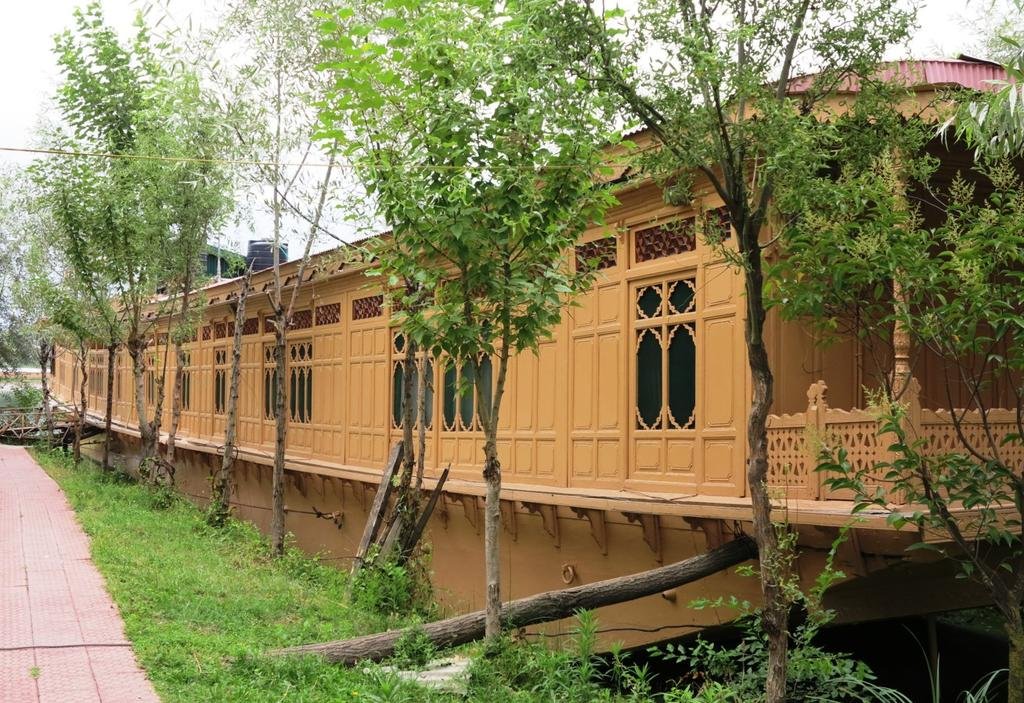
& Kashmir history from the above link
In the middle of the 18th century the British Government of India sold the valley of Kashmir to Raja Gulab Singh of Jammu, for 3/4 million Pounds. The Raja combined the regions in the hilly area and established The Princely State of Jammu, Kashmir and Ladakh under British vassalage. The English were not allowed to buy land in Kashmir and
The Princely State of Kashmir and Jammu (as it was then called) was constituted between 1820 and 1858 and was "somewhat artificial in composition and it did not develop a fully coherent identity, partly as a result of its disparate origins and partly as a result of the autocratic rule which it experienced on the fringes of Empire." It combined disparate regions, religions, and ethnicities: to the east, Ladakh was ethnically and culturally Tibetan and its inhabitants practised Buddhism; to the south, Jammu had a mixed population of Hindus, Muslims and Sikhs; in the heavily populated central Kashmir valley, the population was overwhelmingly Sunni Muslim, however, there was also a small but influential Hindu minority, the Kashmiri brahmins or pandits; to the northeast, sparsely populated Baltistan had a population ethnically related to Ladakh, but which practised Shi'a Islam; to the north, also sparsely populated, Gilgit Agency, was an area of diverse, mostly Shi'a groups; and, to the west, Punch was Muslim, but of different ethnicity than the Kashmir valley.[SUP][9][/SUP] After the Indian Rebellion of 1857, in which Kashmir sided with the British, and the subsequent assumption of direct rule by Great Britain, the princely state of Kashmir came under the paramountcy of the British Crown.
The British made over to Gulab Singh for (Rupees) 75 lakhs all the hilly or mountainous country situated to the east of Indus and west of Ravi" (i.e. the Vale of Kashmir). Soon after Gulab Singh's death in 1857, his son, Ranbir Singh, added the emirates of Hunza, Gilgit and Nagar to the kingdom.
From Wiki re Srinagar:
[h=3]Post-Indian Independence[/h]After India and Pakistan's independence from Britain, villagers around the city of Poonch began an armed protest at continued rule of the Maharaja on August 17, 1947.[SUP][7][/SUP] In view of the Poonch uprising, certain Pashtun tribes such as Mehsud and Afridi from mountainous region of Khyber Pakhtunkhwa of Pakistan and with its collusion, entered the Kashmir valley to capture it on October 22, 1947.[SUP][8][/SUP] The Maharaja, who had refused to accede to either India or Pakistan in hopes of securing his own independent state, signed the instrument of accession in exchange for refuge on 26 October 1947, as tribesmen approached the outskirts of Srinagar. The Accession was accepted by India the next day. The government of India immediately airlifted Indian troops to Srinagar and prevented the tribesmen from reaching Srinagar. The India army never left.[SUP][citation needed][/SUP]
In 1989, Srinagar became the focus of the Kashmiri uprising against Indian rule, and continues to be a highly politicized hotbed of separatist activity with frequent spontaneous protests and strikes ("bandhs" in local parlance). On January 19, 1990, the Gawakadal massacre of at least 50 unarmed protestors by Indian forces,[SUP][9][/SUP] and up to 280 by some estimates from eyewitness accounts,[SUP][10][/SUP] set the stage for bomblasts, shootouts, and curfews that characterized Srinagar throughout the early and mid-1990s. Further massacres in the spring of 1990 in which 51 unarmed protesters were allegedly killed by Indian security forces in Zakura and Tengpora, along with the January 6th 1993 massacre of 55 unarmed protestors allegedly by Indian security forces in the nearby town of Sopore heightened anti-Indian sentiments in Srinagar.[SUP][11][/SUP] As a result, bunkers and checkpoints are found throughout the city, although their numbers have come down in the past few years as miltancy has declined. However, frequent protests still occur against Indian rule, such as the August 22, 2008 rally in which hundreds of thousands[SUP][12][/SUP] of Kashmiri civilians protested against Indian rule in Srinagar.[SUP][13][/SUP][SUP][14][/SUP] Similar protests took place every summer for the next 4 years, and most recently following the execution of Afzal Guru in February 2013.[SUP][15][/SUP]


From:
Houseboats
In the19th century the boat-dwelling community in Srinagar startet building luxury versions of their own homes to cater to visitors. The houseboats carry names like "H.B. Duke Well", "Silver Stereet", "New Pala Palace" which clearly refers to the English settlers. The settlers were not able to buy land in Srinagar and developed therefor the houseboat tradition further. This has during time developed into a well organized houseboat hotel business, where you can rent a room or a whole boat. Many Indian tourists stay here in the summer, as the climate is plesant and the surroudings offer many possiblities for interesting seightseeing.
Foreign tourists are few because of the political situation. The hospitality is very high though and the Kasmiris take great pride in making their guests feel at home.

& Kashmir history from the above link
In the middle of the 18th century the British Government of India sold the valley of Kashmir to Raja Gulab Singh of Jammu, for 3/4 million Pounds. The Raja combined the regions in the hilly area and established The Princely State of Jammu, Kashmir and Ladakh under British vassalage. The English were not allowed to buy land in Kashmir and
The Princely State of Kashmir and Jammu (as it was then called) was constituted between 1820 and 1858 and was "somewhat artificial in composition and it did not develop a fully coherent identity, partly as a result of its disparate origins and partly as a result of the autocratic rule which it experienced on the fringes of Empire." It combined disparate regions, religions, and ethnicities: to the east, Ladakh was ethnically and culturally Tibetan and its inhabitants practised Buddhism; to the south, Jammu had a mixed population of Hindus, Muslims and Sikhs; in the heavily populated central Kashmir valley, the population was overwhelmingly Sunni Muslim, however, there was also a small but influential Hindu minority, the Kashmiri brahmins or pandits; to the northeast, sparsely populated Baltistan had a population ethnically related to Ladakh, but which practised Shi'a Islam; to the north, also sparsely populated, Gilgit Agency, was an area of diverse, mostly Shi'a groups; and, to the west, Punch was Muslim, but of different ethnicity than the Kashmir valley.[SUP][9][/SUP] After the Indian Rebellion of 1857, in which Kashmir sided with the British, and the subsequent assumption of direct rule by Great Britain, the princely state of Kashmir came under the paramountcy of the British Crown.
The British made over to Gulab Singh for (Rupees) 75 lakhs all the hilly or mountainous country situated to the east of Indus and west of Ravi" (i.e. the Vale of Kashmir). Soon after Gulab Singh's death in 1857, his son, Ranbir Singh, added the emirates of Hunza, Gilgit and Nagar to the kingdom.
From Wiki re Srinagar:
[h=3]Post-Indian Independence[/h]After India and Pakistan's independence from Britain, villagers around the city of Poonch began an armed protest at continued rule of the Maharaja on August 17, 1947.[SUP][7][/SUP] In view of the Poonch uprising, certain Pashtun tribes such as Mehsud and Afridi from mountainous region of Khyber Pakhtunkhwa of Pakistan and with its collusion, entered the Kashmir valley to capture it on October 22, 1947.[SUP][8][/SUP] The Maharaja, who had refused to accede to either India or Pakistan in hopes of securing his own independent state, signed the instrument of accession in exchange for refuge on 26 October 1947, as tribesmen approached the outskirts of Srinagar. The Accession was accepted by India the next day. The government of India immediately airlifted Indian troops to Srinagar and prevented the tribesmen from reaching Srinagar. The India army never left.[SUP][citation needed][/SUP]
In 1989, Srinagar became the focus of the Kashmiri uprising against Indian rule, and continues to be a highly politicized hotbed of separatist activity with frequent spontaneous protests and strikes ("bandhs" in local parlance). On January 19, 1990, the Gawakadal massacre of at least 50 unarmed protestors by Indian forces,[SUP][9][/SUP] and up to 280 by some estimates from eyewitness accounts,[SUP][10][/SUP] set the stage for bomblasts, shootouts, and curfews that characterized Srinagar throughout the early and mid-1990s. Further massacres in the spring of 1990 in which 51 unarmed protesters were allegedly killed by Indian security forces in Zakura and Tengpora, along with the January 6th 1993 massacre of 55 unarmed protestors allegedly by Indian security forces in the nearby town of Sopore heightened anti-Indian sentiments in Srinagar.[SUP][11][/SUP] As a result, bunkers and checkpoints are found throughout the city, although their numbers have come down in the past few years as miltancy has declined. However, frequent protests still occur against Indian rule, such as the August 22, 2008 rally in which hundreds of thousands[SUP][12][/SUP] of Kashmiri civilians protested against Indian rule in Srinagar.[SUP][13][/SUP][SUP][14][/SUP] Similar protests took place every summer for the next 4 years, and most recently following the execution of Afzal Guru in February 2013.[SUP][15][/SUP]
KTMphil
Senior member
There were 2 to 3 bedrooms on each house boat, all clean with a vintage feel to them, everyone loved the old world feel.
View attachment 19266
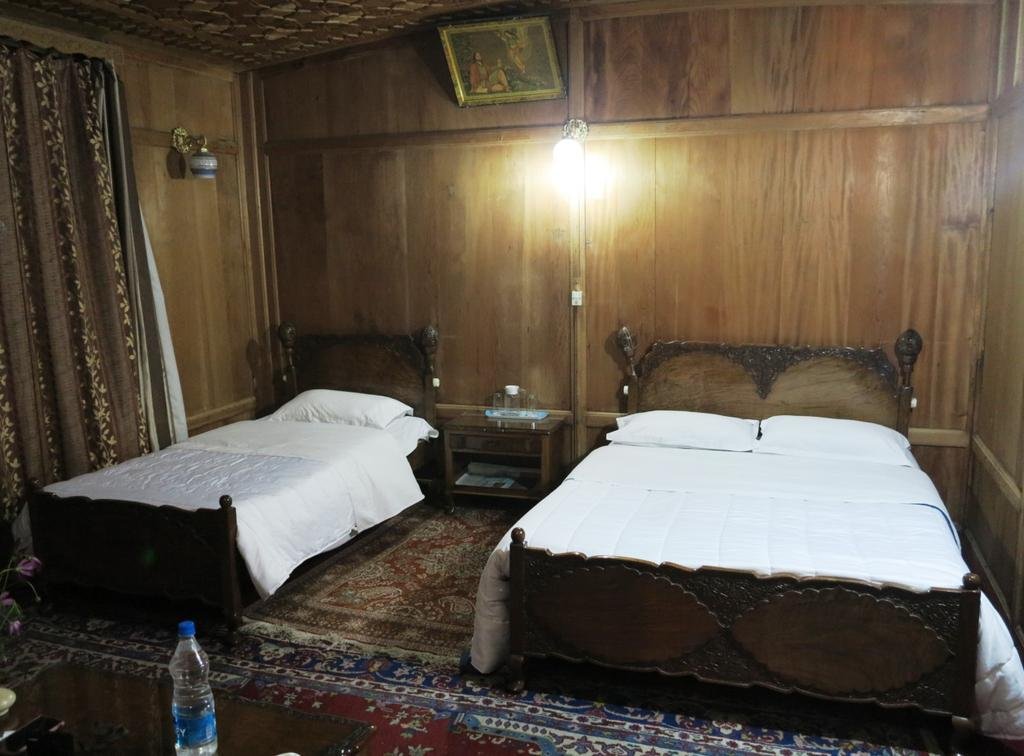
View attachment 19267
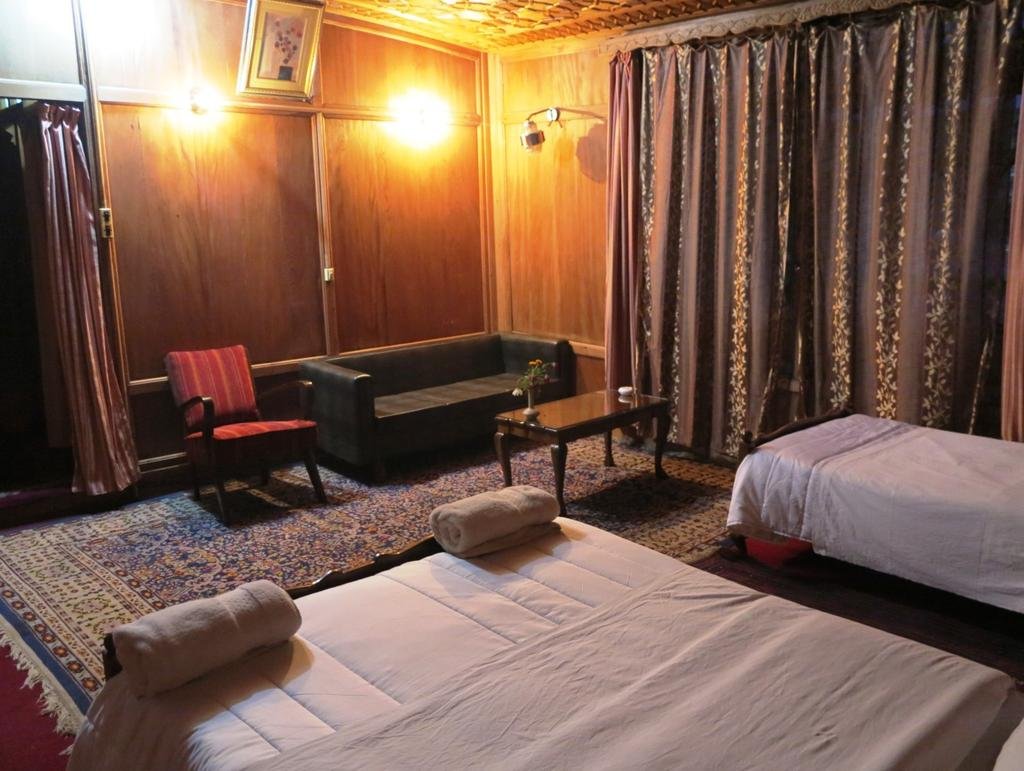
View attachment 19268
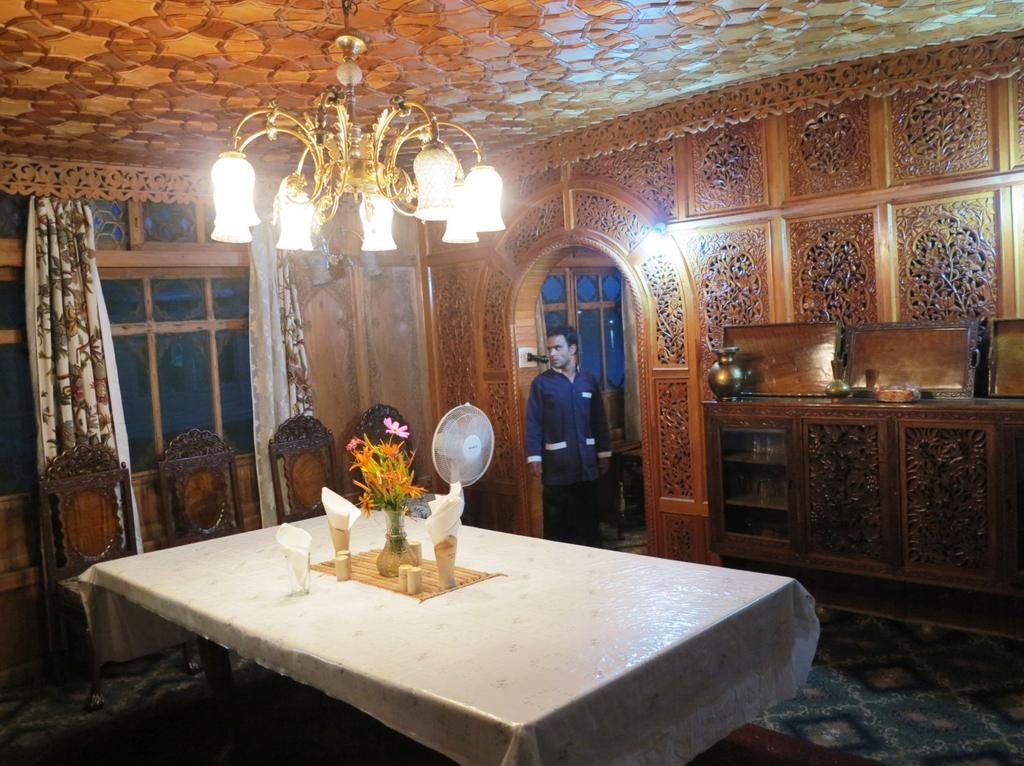
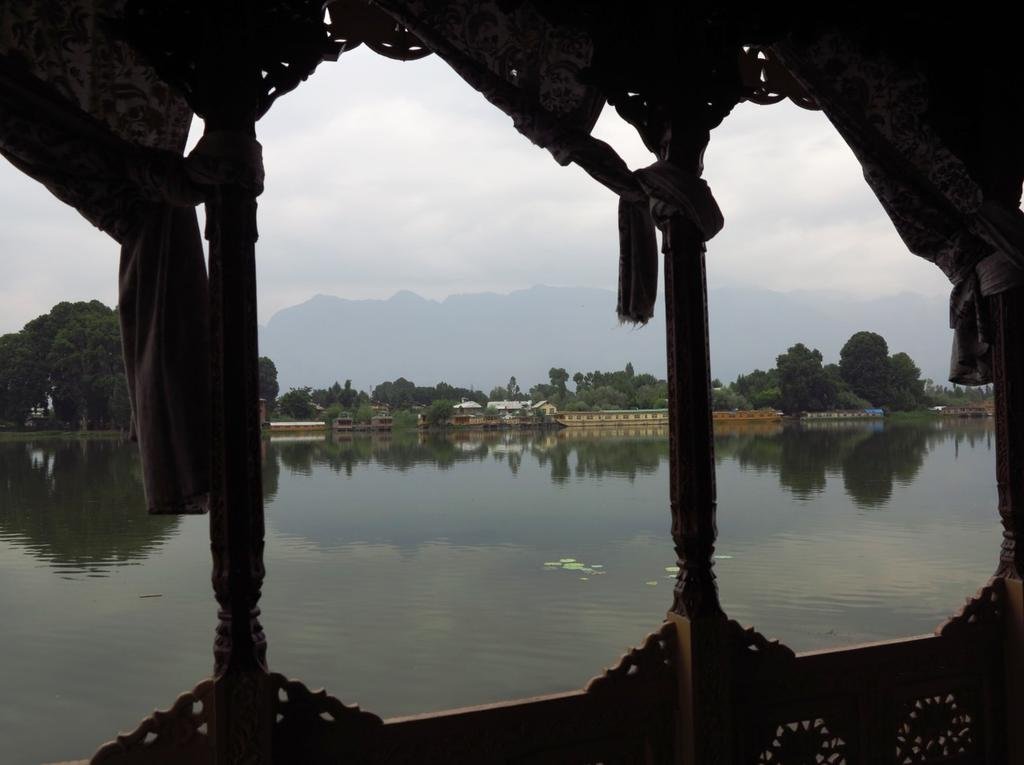
It didn't take long for the vendors to show up - the first flower seller
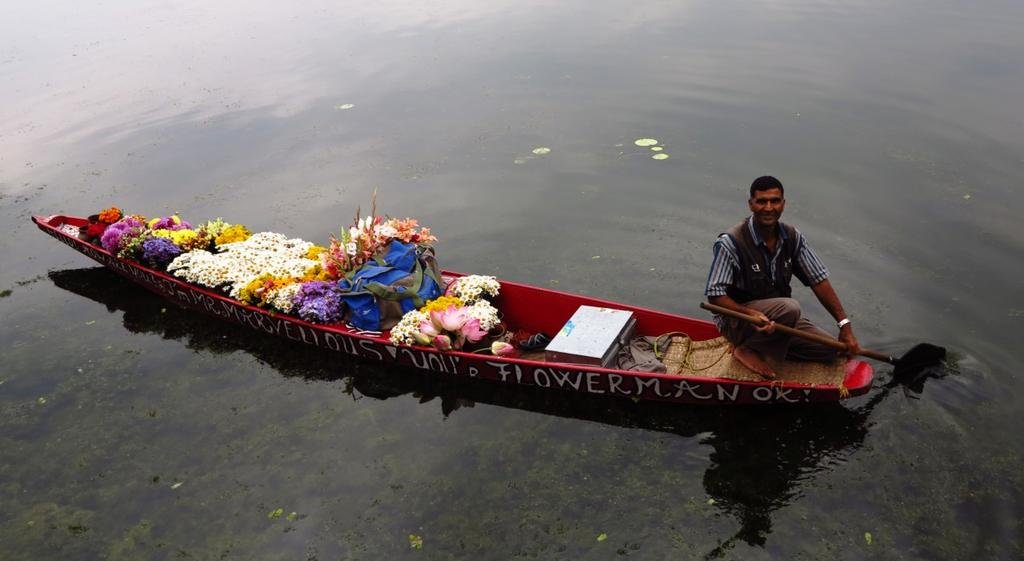
View attachment 19266

View attachment 19267

View attachment 19268


It didn't take long for the vendors to show up - the first flower seller

KTMphil
Senior member
KTMphil
Senior member
KTMphil
Senior member
The name of the Austrians boat was quite amusing


KTMphil
Senior member
The Durrani Fort strategically built in 1590/ then 1808 in the best spot

From Wiki:
Hari Parbat - Wikipedia, the free encyclopedia
The first fortifications on the site were constructed by the Mughal emperor Akbar in 1590. He built an outer wall for the fort, and planned a new capital called Nager Nagor to be built within the wall. That project was never completed. The present fort was built in 1808 under the reign of Shuja Shah Durrani.

From Wiki:
Hari Parbat - Wikipedia, the free encyclopedia
The first fortifications on the site were constructed by the Mughal emperor Akbar in 1590. He built an outer wall for the fort, and planned a new capital called Nager Nagor to be built within the wall. That project was never completed. The present fort was built in 1808 under the reign of Shuja Shah Durrani.
KTMphil
Senior member
Maybe Enfield built this monstrosity too

Didn't know there was 2 palaces? Maybe some copyright infringement here


Didn't know there was 2 palaces? Maybe some copyright infringement here

KTMphil
Senior member
100's of locals fishing, this chap didn't look like he'd caught anything yet

The path through the Lilly pads



The path through the Lilly pads


KTMphil
Senior member
Taking the wife out for a ride

Collecting the roots from the lilies which are used to feed the cows

So far so good, quite an interesting boat ride



Collecting the roots from the lilies which are used to feed the cows

So far so good, quite an interesting boat ride


KTMphil
Senior member
Lots of shouting and screaming ahead between Muslims and Hindi's, looks like a "debate" over the current situation regarding the shootings of protesters at the demonstration

We pass by, they don't give us a second look


We pass by, they don't give us a second look

KTMphil
Senior member
Quite interesting how good their boat handling was, there again they'd been doing it all their lives






KTMphil
Senior member
This will be a little tight

The other side of the bridge, we wernt quite sure what was going on here, then it became clear that dinner was being prepared Halal style

More lily root harvesting'


The other side of the bridge, we wernt quite sure what was going on here, then it became clear that dinner was being prepared Halal style

More lily root harvesting'

KTMphil
Senior member
Fishing




& around into the old town





& around into the old town

KTMphil
Senior member
The lake was surprising clean, not one corn-eyed-brown-trout had been spotted yet

Into the old city


Lots of smiles around



Into the old city


Lots of smiles around


KTMphil
Senior member
In the heart of the old cities waterways and the canal is heaving with pashmire scarf touts

The tailor

Floating general store


The tailor

Floating general store

KTMphil
Senior member
The Pharmacie

Another general store

& timber sales


Another general store

& timber sales

KTMphil
Senior member
Dal lake water traffic

Looking away one the camera is spotted


More shyness, this seemed to be a typical theme here


Looking away one the camera is spotted


More shyness, this seemed to be a typical theme here

KTMphil
Senior member
Dal lake, a beautiful place




My favorite shot of the old city





My favorite shot of the old city

KTMphil
Senior member
Drizzle around, keeping it all dry

The brick buildings of the old city


Notice the door frame angles as the building has sunk over time


The brick buildings of the old city


Notice the door frame angles as the building has sunk over time

KTMphil
Senior member
Market sellers ahead

Must have been fresh, they all wanted it



Must have been fresh, they all wanted it


KTMphil
Senior member
Then back towards home








KTMphil
Senior member
Heavy rain as we return, the fisherman getting some shelter



The detail on the house boats is superb





The detail on the house boats is superb


KTMphil
Senior member
How reliable were the Royal Enfield 500 Bullets?
The Indian mechanics joke that the Enfields are "sick but not terminally ill" & from riding one every day for 23 days, I think this is the perfect analogy. All of our bikes made the trip.
Below is a list of fixes that were done to the Enfields along the route
- At least 6 blocked fuel filters, the inside of the Enfields fuel tanks are not painted and rust drops into the fuel, I dont think it was a dirt fuel problem
- One starter motor replaced, bearings failed
- One clutch cable
- Back wheel replaced, bike was tracking incorrectly
- Four spark plugs changed
- Leaky gearbox casing, easy fix
As you can see nothing too serious, but great to have a mechanic on hand that knows the bike
The Indian mechanics joke that the Enfields are "sick but not terminally ill" & from riding one every day for 23 days, I think this is the perfect analogy. All of our bikes made the trip.
Below is a list of fixes that were done to the Enfields along the route
- At least 6 blocked fuel filters, the inside of the Enfields fuel tanks are not painted and rust drops into the fuel, I dont think it was a dirt fuel problem
- One starter motor replaced, bearings failed
- One clutch cable
- Back wheel replaced, bike was tracking incorrectly
- Four spark plugs changed
- Leaky gearbox casing, easy fix
As you can see nothing too serious, but great to have a mechanic on hand that knows the bike
KTMphil
Senior member
What does it cost?
We did this 3 week tour with Heindrick, the owner of Asia Bike Tours ( website of the tour we did : Asia-Bike-Tours | India ? Himalaya Motorcycle Tour to Ladakh and Kashmir )
First of all, there are some really cheap flights from Bangkok, Thailand to Delhi, India. Heindrick booked a flight one way on Indigo Airlines for just over 3,000 Bht, amazing value, so getting there isn't a problem. We went business class on Air India from Bangkok for around USD$ 800 per person return/ round trip.
For the 3 week tour we did, the cost would be around EUR 2,850 or 117,000 Bht per person. That is all inclusive & includes your flight from Srinagar back to Delhi ( you can see the prices in this booking link Asia-Bike-Tours | Rates & Dates) . Its cheaper if you ride the bike back to where you started from. 2 week tour can be done for around 2,300 Euro / 94.300 Bht. This is basically an all inclusive price excluding alcohol. At around 5,500 Bht a day including motorcycle, guide, support vehicle & everything all inclusive it's not bad value.
We did this 3 week tour with Heindrick, the owner of Asia Bike Tours ( website of the tour we did : Asia-Bike-Tours | India ? Himalaya Motorcycle Tour to Ladakh and Kashmir )
First of all, there are some really cheap flights from Bangkok, Thailand to Delhi, India. Heindrick booked a flight one way on Indigo Airlines for just over 3,000 Bht, amazing value, so getting there isn't a problem. We went business class on Air India from Bangkok for around USD$ 800 per person return/ round trip.
For the 3 week tour we did, the cost would be around EUR 2,850 or 117,000 Bht per person. That is all inclusive & includes your flight from Srinagar back to Delhi ( you can see the prices in this booking link Asia-Bike-Tours | Rates & Dates) . Its cheaper if you ride the bike back to where you started from. 2 week tour can be done for around 2,300 Euro / 94.300 Bht. This is basically an all inclusive price excluding alcohol. At around 5,500 Bht a day including motorcycle, guide, support vehicle & everything all inclusive it's not bad value.
LivinLOS
Senior Member
- Joined
- Feb 10, 2011
- Bikes
- Gas Gas 250 (Trials), YZ250 (enduro), DRZ440 (Supermoto) CBR900 Streetfighter (scary !!)
Thats a steal.. I expected a cost of perhaps 2 - 3 times that..
I was surprised on our India trip that hotels were expensive for the standard, to have non flop house type rooms, wasnt cheap.. Hence I saw these and thought it would be way more.
I was surprised on our India trip that hotels were expensive for the standard, to have non flop house type rooms, wasnt cheap.. Hence I saw these and thought it would be way more.
2wheels
Community Manager
It looks like you are now back in 'civilisation' Phil, so let me be amongst the first to congratulate you and thank you for your report on this epic ride.
The pics are magnificent, especially from the last few days of the ride.
And not forgetting Khun Som; I reckon she's a bit of a hero and would love to know her impressions of the experience.

The RE issues were not as serious as I had anticipated.
The pics are magnificent, especially from the last few days of the ride.
And not forgetting Khun Som; I reckon she's a bit of a hero and would love to know her impressions of the experience.

The RE issues were not as serious as I had anticipated.
KTMphil
Senior member
Thats a steal.. I expected a cost of perhaps 2 - 3 times that..
I was surprised on our India trip that hotels were expensive for the standard, to have non flop house type rooms, wasnt cheap.. Hence I saw these and thought it would be way more.
I would agree...I think it is excellent value for money considering the support etc....and the route is mindblowing.
KTMphil
Senior member
Fantastic story Phil & Som.
You have piqued the interest of a few people here I have sent the link to.
Come across any fields like this that our friends found?
Yes! They were everywhere... I would highly recommend this bike trip to everyone.....something you ll never forget!
Dal lake, a beautiful place
My favorite shot of the old city

Phil
What a great place to end the tour !
I spent a week on Dal Lake in 1986.
Going by your pics its still as nice now as it was then. Perhaps a positive side effect of the civil unrest is its kept mass tourism in check.
2wheels
Community Manager
Perhaps a positive side effect of the civil unrest is its kept mass tourism in check.
Very good point Bill.
KTMphil
Senior member
Leaving for Srinagar airport, signs of the disturbances were still all around us




KTMphil
Senior member
If you do this trip plan a couple of free days at the end in Delhi so you can visit the Taj Mahal temple which is in the town of Agra 200 km south of Delhi. It will take anywhere between 3 1/2 & 5 1/2 hours one way, the traffic getting out of Delhi is a nightmare.
Agra has a bit of history itself
Wiki:
Agra - Wikipedia, the free encyclopedia
Though Agra's history is largely recognised with Mughal Empire, the place was established much before it and has linkages since Mahabharat period and Mahirshi Angira in 1000 BC. It is generally accepted that Sultan Sikandar Lodī, the Ruler of the Delhi Sultanate founded Agra in the year 1504. After the Sultan's death the city passed on to his son Sultan Ibrāhīm Lodī. He ruled his Sultanate from Agra until he fell fighting to Bābar in the First battle of Panipat fought in 1526.
In the year 1556, the great Hindu warrior Hemu Vikramaditya, also known as Samrat Hem Chander Vikramaditya, won the state of Agra as the prime minister cum Chief of Army of Adil Shah of the Afghan Sūrī Dynasty. The commander of Humāyūn / Akbar's forces in Agra, Tardi Beg Khan, was so scared of Hemu that he retreated from the city without a fight. This was Hemu's 21st continuous win since 1554, and he later went on to conquer Delhi, having his coronation at Purānā Qil'a in Delhi on 7 October 1556 and re-established the Hindu Kingdom and the Vikramaditya Dynasty in North India.
The golden age of the city began with the Mughals. It was known then as Akbarabād and remained the capital of the Mughal Empire under the Emperors Akbar, Jahāngīr and Shāh Jahān. Shāh Jahān later shifted his capital to Shāhjahānabād in the year 1649.
Agra ( [SUP]i[/SUP]/ˈɑːɡrə/; Hindi: आगरा Āgrā, Urdu: آگره‎
[SUP]i[/SUP]/ˈɑːɡrə/; Hindi: आगरा Āgrā, Urdu: آگره‎ , the former capital of Hindustan, is a city on the banks of the river Yamuna in the northern state of Uttar Pradesh, India. It is 363 kilometres (226 mi) west of the state capital, Lucknow, and 200 kilometres (124 mi) south of the national capital New Delhi. With a population of 1,686,976 (2010 est.), it is one of the most populous cities in Uttar Pradesh and the 19th most populous in India.[SUP][2][/SUP] Agra can also refer to the administrative district that has its headquarters in Agra city.
, the former capital of Hindustan, is a city on the banks of the river Yamuna in the northern state of Uttar Pradesh, India. It is 363 kilometres (226 mi) west of the state capital, Lucknow, and 200 kilometres (124 mi) south of the national capital New Delhi. With a population of 1,686,976 (2010 est.), it is one of the most populous cities in Uttar Pradesh and the 19th most populous in India.[SUP][2][/SUP] Agra can also refer to the administrative district that has its headquarters in Agra city.
The city is mentioned in the epic Mahābhārata, where it was called Agrevaṇa ("the border of the forest").[SUP][3][/SUP] Legend ascribes the founding of the city to Raja Badal Singh, a Sikarwar Rajput king (c. 1475), whose fort, Badalgarh, stood on or near the site of the present fort. However, the 11th century Persian poet Mas'ūd Sa'd Salmān writes of a desperate assault on the fortress of Agra, then held by the Shāhī King Jayapala, by Sultan Mahmud of Ghazni.[SUP][4][/SUP] Sultan Sikandar Lodī was the first to move his capital from Delhi to Agra in 1506. He died in 1517 and his son, Ibrāhīm Lodī, remained in power there for nine more years, finally being defeated at the Battle of Panipat in 1526.[SUP][5][/SUP] Between 1540 and 1556, Afghans, beginning with Sher Shah Suri, and Hindu King Hem Chandra Vikramaditya (also called Hemu), ruled the area. It achieved fame as the capital of the Mughal Empire from 1556 to 1658. It is a major tourist destination because of its many splendid Mughal-era buildings, most notably the Tāj Mahal, Agra Fort and Fatehpūr Sikrī, all three of which are UNESCO World Heritage Sites.

Hitching a ride

Agra has a bit of history itself
Wiki:
Agra - Wikipedia, the free encyclopedia
Though Agra's history is largely recognised with Mughal Empire, the place was established much before it and has linkages since Mahabharat period and Mahirshi Angira in 1000 BC. It is generally accepted that Sultan Sikandar Lodī, the Ruler of the Delhi Sultanate founded Agra in the year 1504. After the Sultan's death the city passed on to his son Sultan Ibrāhīm Lodī. He ruled his Sultanate from Agra until he fell fighting to Bābar in the First battle of Panipat fought in 1526.
In the year 1556, the great Hindu warrior Hemu Vikramaditya, also known as Samrat Hem Chander Vikramaditya, won the state of Agra as the prime minister cum Chief of Army of Adil Shah of the Afghan Sūrī Dynasty. The commander of Humāyūn / Akbar's forces in Agra, Tardi Beg Khan, was so scared of Hemu that he retreated from the city without a fight. This was Hemu's 21st continuous win since 1554, and he later went on to conquer Delhi, having his coronation at Purānā Qil'a in Delhi on 7 October 1556 and re-established the Hindu Kingdom and the Vikramaditya Dynasty in North India.
The golden age of the city began with the Mughals. It was known then as Akbarabād and remained the capital of the Mughal Empire under the Emperors Akbar, Jahāngīr and Shāh Jahān. Shāh Jahān later shifted his capital to Shāhjahānabād in the year 1649.
Agra (
 [SUP]i[/SUP]/ˈɑːɡrə/; Hindi: आगरा Āgrā, Urdu: آگره‎
[SUP]i[/SUP]/ˈɑːɡrə/; Hindi: आगरा Āgrā, Urdu: آگره‎ , the former capital of Hindustan, is a city on the banks of the river Yamuna in the northern state of Uttar Pradesh, India. It is 363 kilometres (226 mi) west of the state capital, Lucknow, and 200 kilometres (124 mi) south of the national capital New Delhi. With a population of 1,686,976 (2010 est.), it is one of the most populous cities in Uttar Pradesh and the 19th most populous in India.[SUP][2][/SUP] Agra can also refer to the administrative district that has its headquarters in Agra city.
, the former capital of Hindustan, is a city on the banks of the river Yamuna in the northern state of Uttar Pradesh, India. It is 363 kilometres (226 mi) west of the state capital, Lucknow, and 200 kilometres (124 mi) south of the national capital New Delhi. With a population of 1,686,976 (2010 est.), it is one of the most populous cities in Uttar Pradesh and the 19th most populous in India.[SUP][2][/SUP] Agra can also refer to the administrative district that has its headquarters in Agra city.The city is mentioned in the epic Mahābhārata, where it was called Agrevaṇa ("the border of the forest").[SUP][3][/SUP] Legend ascribes the founding of the city to Raja Badal Singh, a Sikarwar Rajput king (c. 1475), whose fort, Badalgarh, stood on or near the site of the present fort. However, the 11th century Persian poet Mas'ūd Sa'd Salmān writes of a desperate assault on the fortress of Agra, then held by the Shāhī King Jayapala, by Sultan Mahmud of Ghazni.[SUP][4][/SUP] Sultan Sikandar Lodī was the first to move his capital from Delhi to Agra in 1506. He died in 1517 and his son, Ibrāhīm Lodī, remained in power there for nine more years, finally being defeated at the Battle of Panipat in 1526.[SUP][5][/SUP] Between 1540 and 1556, Afghans, beginning with Sher Shah Suri, and Hindu King Hem Chandra Vikramaditya (also called Hemu), ruled the area. It achieved fame as the capital of the Mughal Empire from 1556 to 1658. It is a major tourist destination because of its many splendid Mughal-era buildings, most notably the Tāj Mahal, Agra Fort and Fatehpūr Sikrī, all three of which are UNESCO World Heritage Sites.

Hitching a ride



